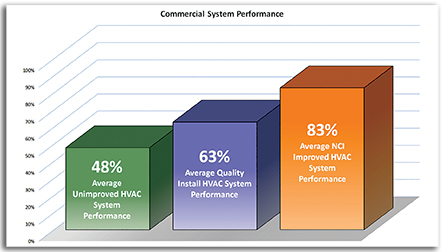There is a serious perception issue within the HVAC Industry that prevents many people from knowing who they really are, what they really do for their customers, and why they really matter to their community.
Most HVAC businesses believe they are only as good as the brands they carry, the volume of products they install, and the number of service agreements they sell.

Unfortunately, most HVAC business owners will not do anything to change this perception until something unexpected happens.
It usually begins with a decline in its customer base. This is followed by fewer jobs, lower profit margins, loss of key performing staff, a higher number of callbacks. And it leads to an increase in customer dissatisfaction. The work environment and morale begin to decline and quickly spiral into a race to the bottom.
More Than Perception
Let’s start this conversation on the deck plates instead of the boardroom. Our industry not only faces a perception problem but also a major labor shortage. This problem is further compounded by a great gap in skills and conduct.
Yes, field service management platforms are great for streamlining the business. Field automated technologies help with productivity, cost avoidance, and potential energy savings. The truth, however, is these streamlined processes and advanced technologies have only exasperated the problem. How? By revealing a deeper knowledge gap that has existed for decades without detection.

Most people are unaware this knowledge gap consists of confounding variables from more than 144 known problems that impact the performance and energy use of HVAC systems. Technician attitude and level of engagement connect directly to an appreciation for how well they impact these problems. It also impacts how well they make a difference for the customer. Ultimately, this impacts how well they represent the mission of your company.
To identify and reduce comfort problem causes, technicians attempt to deploy refrigerant measurement and diagnostic technologies. Some of these are included as HVAC measures in utility energy programs across the nation. When using these technologies, techs receive multiple major and minor fault messages relating to refrigerant charge and airflow. What is wrong and what may be wrong are left to the technician’s discretion to correct.
This well-intentioned attempt to increase field productivity, accuracy, and professionalism does not reveal what is truly plaguing system performance. Why? They are based on assumptions that exclude how well the entire HVAC system is performing.
The Cost of Change
ASHRAE (American Society of Heating, Refrigeration, and Airconditioning Engineers) has gone on record and indirectly stated this truth ‘ yet few know this. Even fewer have been willing to put these truths into practice.
Who can blame them?
Click Below For Next Page













Recent Comments